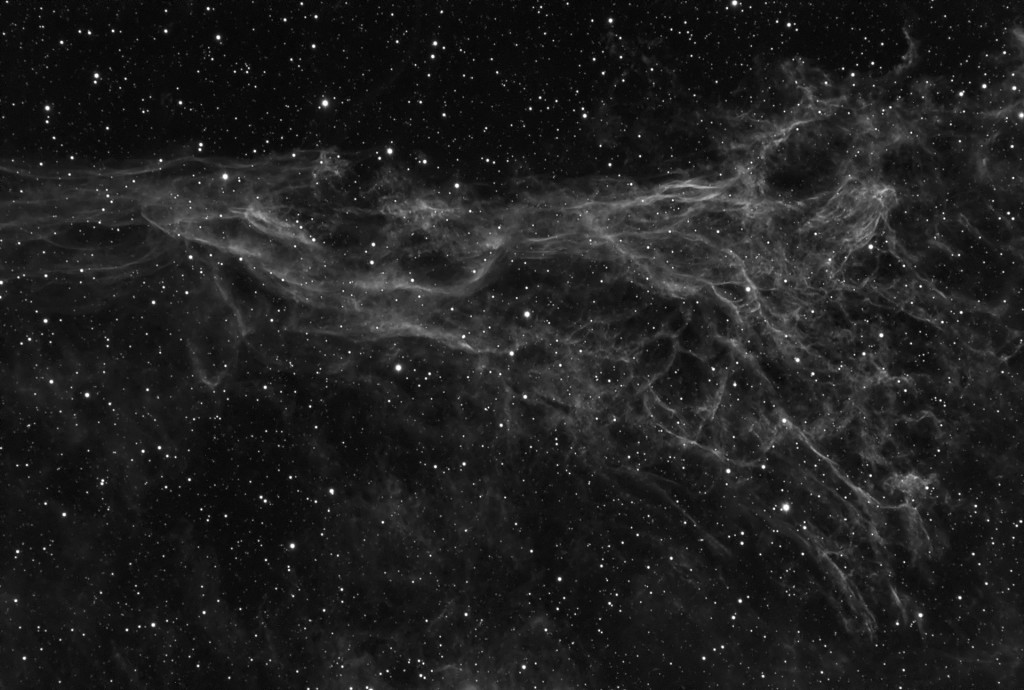 Part of the larger Veil Nebula complex, these glowing filaments of ionised hydrogen are the result of shock waves from a massive supernova explosion estimated to have occurred around 5,000 years ago. The nebula was discovered photographically by Williamina Fleming in 1904 but following the custom of the day the find was credited to her superior Edward Pickering, director of the Harvard College Observatory, and catalogued as NGC 6979.
Part of the larger Veil Nebula complex, these glowing filaments of ionised hydrogen are the result of shock waves from a massive supernova explosion estimated to have occurred around 5,000 years ago. The nebula was discovered photographically by Williamina Fleming in 1904 but following the custom of the day the find was credited to her superior Edward Pickering, director of the Harvard College Observatory, and catalogued as NGC 6979.
The image was taken over three nights in October 2015 from my observatory in Somerset with my APM six inch refractor operating at its native focal ratio of F/7.9.
Right ascension: 20h 48m 21s | Declination: +31° 29′ 24″ | Distance: 2,600 Light Years
Field of view: 42 x 28 arcmin
Camera: SBIG ST-10XME
Telescope: APM 152-1200ED F/7.9
Guiding: Starlight Xpress Active Optics SXV-LF-AO
Filters: Astrodon Ha (3nm)
Exposures: Ha 14 x 20 min
Total exposure: 4.6 hours
Scale: 1.15 arcsec/pixel
Image acquired: 2nd, 3rd & 7th October 2015
Image capture with MaxIm DL, FocusMax, ACP; Image processed with MaxIm DL; Photoshop CC 2014